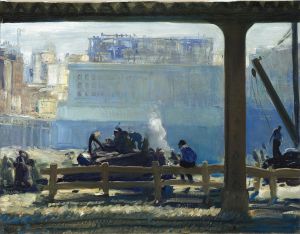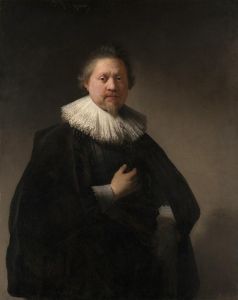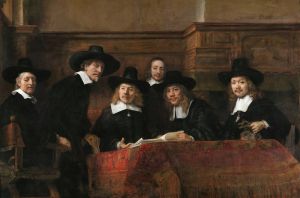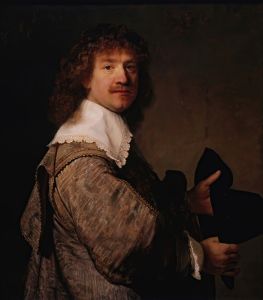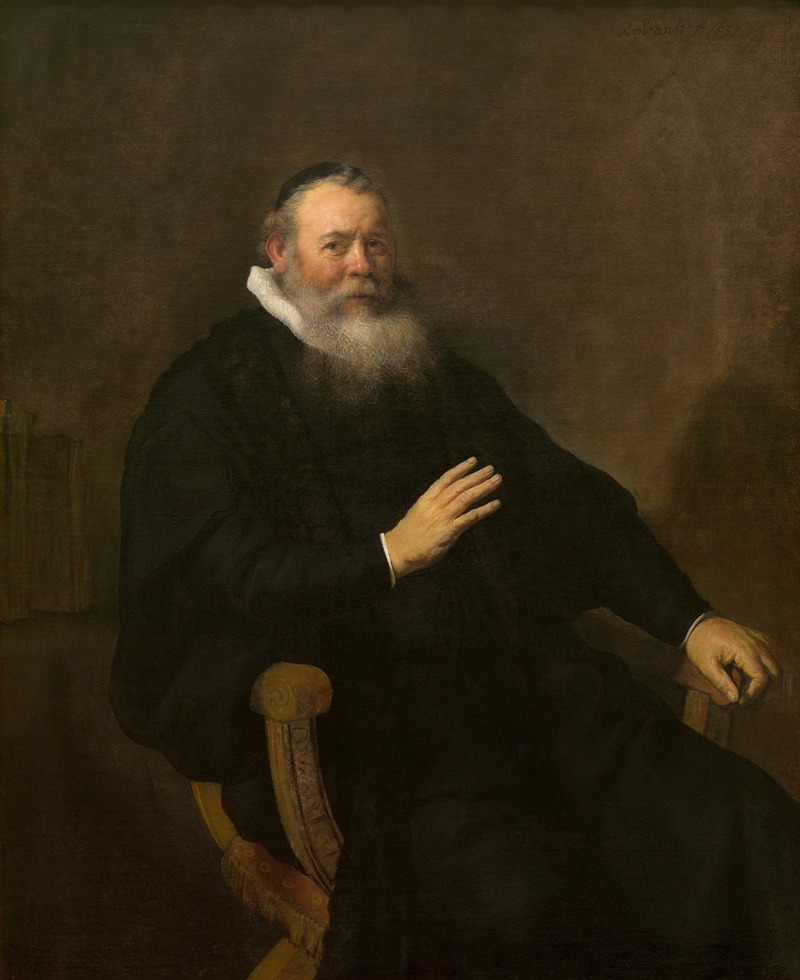
Portrait of Eleazar Swalmius
A hand-painted replica of Rembrandt van Rijn’s masterpiece Portrait of Eleazar Swalmius, meticulously crafted by professional artists to capture the true essence of the original. Each piece is created with museum-quality canvas and rare mineral pigments, carefully painted by experienced artists with delicate brushstrokes and rich, layered colors to perfectly recreate the texture of the original artwork. Unlike machine-printed reproductions, this hand-painted version brings the painting to life, infused with the artist’s emotions and skill in every stroke. Whether for personal collection or home decoration, it instantly elevates the artistic atmosphere of any space.
"Portrait of Eleazar Swalmius" is an oil painting created by the renowned Dutch artist Rembrandt van Rijn in 1637. The artwork depicts Eleazar Swalmius, a Calvinist minister from the Netherlands, and is considered an example of Rembrandt's skill in portraiture during the Dutch Golden Age. The painting is notable for its detailed rendering of the subject's facial features and clothing, as well as its use of light and shadow to create a sense of depth and realism.
In the portrait, Swalmius is shown seated, dressed in a black robe with a white ruff collar, which was typical attire for Protestant clergymen of the time. His expression is calm and contemplative, reflecting his role as a religious leader. Rembrandt's mastery of chiaroscuro—the contrast between light and dark—is evident in the way the minister's face and hands are illuminated against the darker background, drawing the viewer's attention to these key elements of the composition.
The painting is also an example of Rembrandt's ability to convey the personality and character of his subjects. Through subtle details, such as the texture of the skin and the thoughtful gaze, Rembrandt captures the dignity and introspective nature of Swalmius. This focus on individuality and psychological depth is a hallmark of Rembrandt's portrait work.
"Portrait of Eleazar Swalmius" is currently housed in the Royal Museum of Fine Arts in Antwerp, Belgium. It is one of many portraits Rembrandt created during his career, showcasing his talent for capturing the essence of his sitters while adhering to the artistic conventions of the time. The painting remains an important example of 17th-century Dutch portraiture and a testament to Rembrandt's enduring legacy as one of the greatest painters in Western art history.





